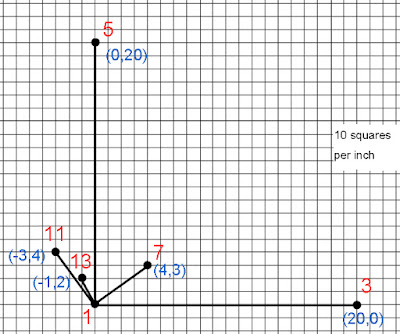 |
| The Lone Page Showing a Unique 7 limit Diamond. The Centerpiece of a File Now illustrating a Diamond Formed From the Scale tree or the Mt. Meru Triangle |
What is unusual is the choice of 6 notes that make up the seed to the process. It turns out this hexad is formed by the scale tree section seeded by 1/1 and 2/1 shown on page 2 and borrowed from another document. This section of the tree was the focus of Novaro who also played with some triangles that do not repeat at the octave mention in this blog in the past. so i have added an example of what type of result we can expect from that process. Here instead of using the tree a reseeding of the meru triangle is used to show another way one can visualize the sequence. What occurs in on the other side of the 2/1 differs only by commas with the lower set of pitches. This could be used as possibly a layout where one only has rooom for centain notes in each traditional octave space.
What should not be lost is the unique type of diamond presented here. It is neither a harmonically or melodically based one, but one that is formed by the tree or a descent down Mt. Meru triangle.


